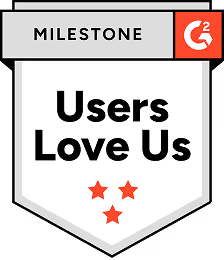Are Persona-Based Sales Campaigns Still Relevant?

Persona-based selling allows you to create your sales message to your buyer personas and customers. Uncovering how the two are synced is critical when you sell to different personas within one organization.
Today’s hyper-personalized world requires you to update your persona-based selling strategy to align with digital transformation and consumer expectations. It means that if you want to invest in a persona-based approach, you have to dig deep and only market to audiences who will find value in it.
What is Persona-Based Selling?
Sales messaging under persona-based selling starts with understanding your target audience and customers: their pains, goals, and roles. It’s essential to understand the people or businesses you are selling to, and your messaging should connect with them and, ultimately, convert the opportunities.
Think of buyer personas as highly detailed representations of segments drawn from your target audience. They refer to fictional characters who represent real people who exist within your audience and would benefit from your products or services.
Data-driven personas are useful to your marketing and sales teams. Think about it; these mapped out personas provide accurate and detailed information about what your consumers want.
- Marketers: Buyer personas allow your marketing team to segment their campaigns, streamline their strategy, and send personalized content to different profile types. Since they know who to target, they can quickly customize marketing content to potential customers via their preferred channels. Personas can also enhance SEO strategy.
- Salespeople: Personas provide sales representatives with a clear picture of who they should target, allowing them to communicate better with them. Detailed buyer personas allow salespeople to prepare for different pain points and have ready responses to facilitate the sale’s closure.
At their best, personas can help you better understand consumers and meet their needs. At their worst (personas based on bias, habit, poorly sourced data), they can mislead your sales efforts and result in subpar marketing campaigns, failed product launches, and lost sales.
In sales and marketing, intuition and gut feelings only get you so far. They do not serve a lot of purposes when it comes to making accurate personas.
Are Persona-Based Sales Campaigns Still Relevant?
Persona-based sales are still relevant, but only if they are data-driven. More sales and marketing teams across industries turn to persona-based sales campaigns because they offer clarity and insights on target buyers. It helps B2B marketing efforts target more decision-makers and capture emerging buyer trends.
By modeling buyer persona behavior using data and insights, salespeople understand how buyers make purchasing decisions, the goals driving their purchasing behaviors, and attitudes affecting their decisions. However, modern sellers are now using data and insights in their persona-based selling strategy instead of bias, habit, and other traditional methods.
Knowing your target customers and influencer types are part of sales and marketing. What’s more, understanding their likes, dislikes, buying motivations, shopping habits, and turnover rates are the next level of data-optimization that all brands strive to collect and leverage. The question is, does it make a difference?
Do you collect data as a habit only to let it sit in a folder unused? Are the statistics you come up with making it into content operation strategy? Do you have a content plan ready to use artfully-crafted, data-perfect personas beyond a one-dimension picture?
These are the questions that separate brands that merely paint personas from those that understand their role in the bigger picture of essential marketing considerations.
Companies leveraging persona-based selling can achieve an improved lead qualification, higher lead conversion rates, and shorter sales cycles. Intangibles include improved lead nurturing and content marketing effectiveness programs that engage prospects with issues of relevance to them.
How to Implement a Persona-Based Sales Approach
Below are key elements recommended for implementing a successful persona-based sales approach:
- Conduct buyer insight research. Buyer insights serve as the foundation for persona-based sales. Qualitative and quantitative measures both bolster research with B2B companies that conduct qualitative research with on-site interviews attaining the deepest insights.
- Modeling buyer personas is the interpretation and synthesis of your gathered insights. Personas depict whom buyers are and map out how their behavior leads to purchase decisions.
- Understanding buyer goals is critical to a successful persona Based selling campaign. Goals drive buying decisions (both conscious and non-conscious). It’s also advisable to understand how pain points and triggers affect goals.
- Create offers and content topics aligned to goals. Identifying the right offers and topics to present to prospects can be challenging for B2B marketing operations. But the process is easier and quicker if you know your target audience’s goals and needs.
- Operational and tactical efficiency. Persona-based selling enables B2B marketing operations to align production, sequencing, timing, delivery, and retrieval mediums to content marketing efforts.
- Presence of measurements and metrics. Measuring result correlates to successful persona-based selling. The metrics you use should have a direct relation to the eventual purchase decision.
A sustainable persona-based selling strategy is not an overnight proposition. Often, many B2B organizations that utilize it take a long-term view.
Building a Data-Driven Persona
You need a reliable approach to turn raw data into a comprehensive and clearly-defined persona.
- Collect customer data: Get breadth and depth of both quantitative and qualitative data. Combined, these data allow for facts with context. Some suitable sources include surveys, customer support systems, behavioral and firmographic data, behavior and actions, text analysis, website traffic and paths, contact metadata, and social interaction tools.
- Identify patterns and commonalities: after collecting data, you need a system in place to help you sort through it and identify patterns. Not all patterns are obvious, and you need domain experience paired with technical acumen to find the “good stuff”. Software is an example of leverage billions of interaction points scrutinized under pattern-analysis to produce the perfect campaign based on your ideal customer profile.
- Create your target persona. Don’t adopt past paradigms and expect different results. Your target persona will change and expand over time. Be willing to find what works today and text what can work better in the future.
The Bottom Line
Without enough data, your customer personas are inadequate. The rapid increase in the volume, variety, and variation of data plus the ability to track and interpret buyer behavior makes the ability to embrace data + insight over habit and bias an imperative for the modern seller. By utilizing an evidence-based approach, your personas will have more depth supported on a foundation of reliable conclusions.
FAQs
Read more posts
View all BlogsNeed more help?
If you still have questions, make sure to check out our Help Center: there, you'll find all the tips & advice you'll need to get your team up & running with Regie.ai.









